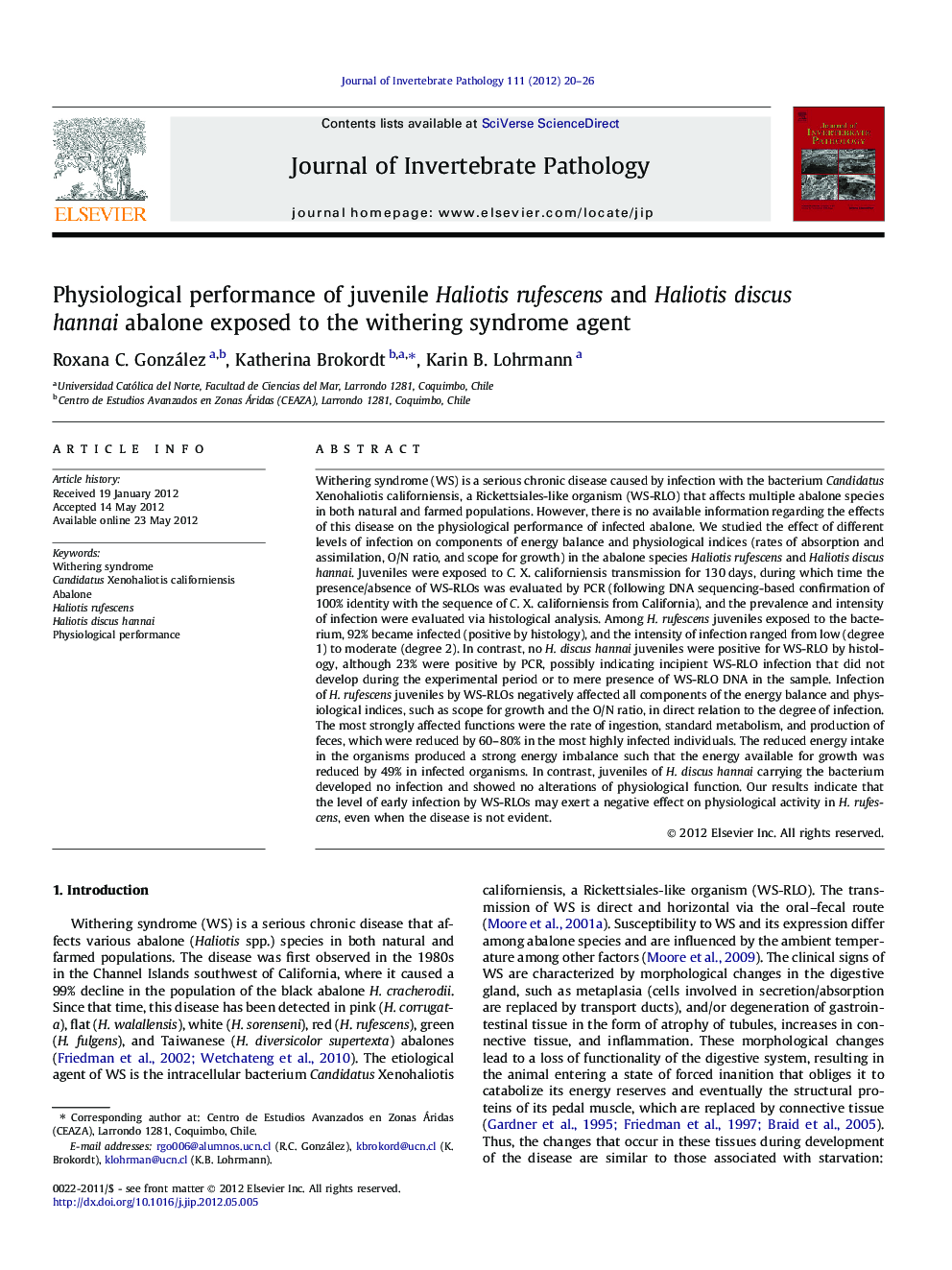| Article ID | Journal | Published Year | Pages | File Type |
|---|---|---|---|---|
| 4557878 | Journal of Invertebrate Pathology | 2012 | 7 Pages |
Withering syndrome (WS) is a serious chronic disease caused by infection with the bacterium Candidatus Xenohaliotis californiensis, a Rickettsiales-like organism (WS-RLO) that affects multiple abalone species in both natural and farmed populations. However, there is no available information regarding the effects of this disease on the physiological performance of infected abalone. We studied the effect of different levels of infection on components of energy balance and physiological indices (rates of absorption and assimilation, O/N ratio, and scope for growth) in the abalone species Haliotis rufescens and Haliotis discus hannai. Juveniles were exposed to C. X. californiensis transmission for 130 days, during which time the presence/absence of WS-RLOs was evaluated by PCR (following DNA sequencing-based confirmation of 100% identity with the sequence of C. X. californiensis from California), and the prevalence and intensity of infection were evaluated via histological analysis. Among H. rufescens juveniles exposed to the bacterium, 92% became infected (positive by histology), and the intensity of infection ranged from low (degree 1) to moderate (degree 2). In contrast, no H. discus hannai juveniles were positive for WS-RLO by histology, although 23% were positive by PCR, possibly indicating incipient WS-RLO infection that did not develop during the experimental period or to mere presence of WS-RLO DNA in the sample. Infection of H. rufescens juveniles by WS-RLOs negatively affected all components of the energy balance and physiological indices, such as scope for growth and the O/N ratio, in direct relation to the degree of infection. The most strongly affected functions were the rate of ingestion, standard metabolism, and production of feces, which were reduced by 60–80% in the most highly infected individuals. The reduced energy intake in the organisms produced a strong energy imbalance such that the energy available for growth was reduced by 49% in infected organisms. In contrast, juveniles of H. discus hannai carrying the bacterium developed no infection and showed no alterations of physiological function. Our results indicate that the level of early infection by WS-RLOs may exert a negative effect on physiological activity in H. rufescens, even when the disease is not evident.
Graphical abstractFigure optionsDownload full-size imageDownload as PowerPoint slideHighlights► Haliotis rufescens is more susceptible to the infection with WS-RLP than H. discus hannai. ► There is a negative correlation between infection level and food intake in H. rufescens. ► A negative correlation exists between infection level and metabolism in H. rufescens. ► The energy balance of H. rufescens infected with WS-RLP is negatively affected. ► The scope for growth of infected juvenile H. rufescens decreases 49%.
